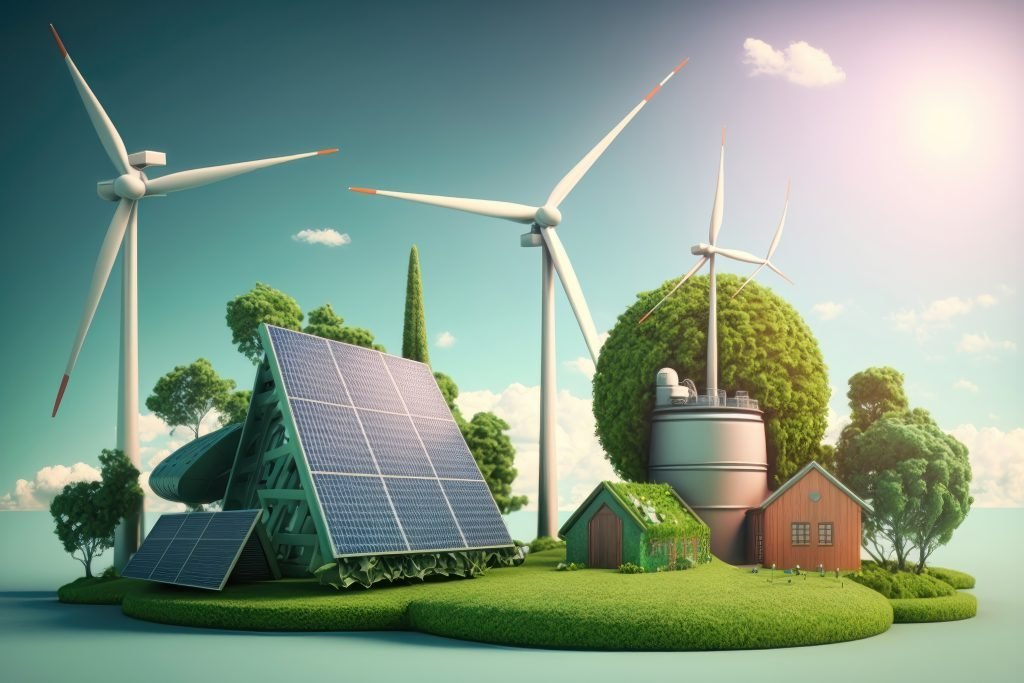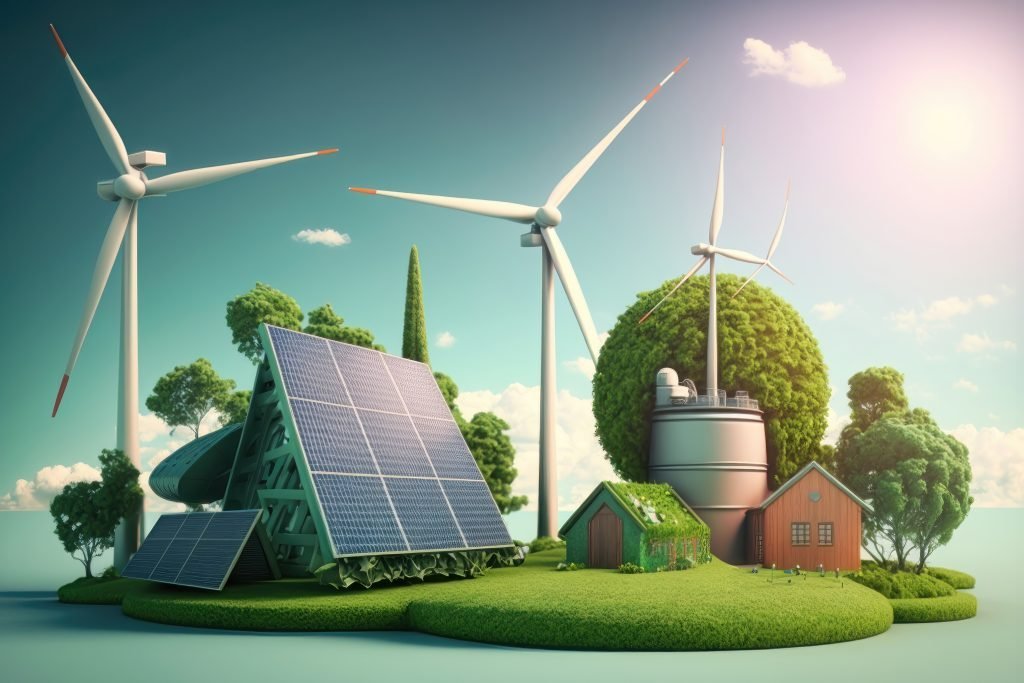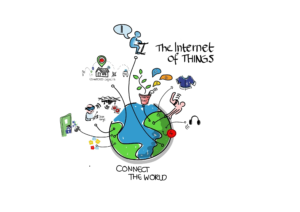The Future of Renewable Energy How Tech Innovations Are Leading the Way
The future of renewable energy is being reshaped by revolutionary technological innovations. These advancements are not only driving progress but also creating opportunities for a cleaner, more sustainable energy landscape. Renewable energy sources are rapidly evolving, offering a solution to the pressing need for sustainable alternatives to fossil fuels, and addressing critical environmental concerns. This article delves into the significant role technology plays in advancing these sources and examines the various technological innovations driving the shift to a cleaner energy system. We will explore the key breakthroughs in solar, wind, and other renewable energy technologies, offering a glimpse into the exciting future we are creating. This article will showcase the power of technological innovation and its impact on achieving sustainable solutions, making it a compelling read for anyone interested in the future of renewable energy.
1. The Solar Revolution: Harnessing Sunlight for Power
1.1 Photovoltaic Technology Advancements
Modern photovoltaic (PV) technology is revolutionizing solar energy collection. Significant breakthroughs in material science and manufacturing processes have reduced the cost and improved the efficiency of solar panels. Researchers are continuously exploring new materials, such as perovskites, which hold promise for even greater efficiency in converting sunlight into electricity. This leads to lower production costs while increasing power generation efficiency. For instance, the use of advanced silicon-based solar cells in large-scale solar farms has dramatically reduced the cost of electricity from solar in recent years.
1.2 Concentrated Solar Power (CSP)
Concentrated solar power (CSP) systems use mirrors to concentrate sunlight onto a receiver, generating high temperatures that drive turbines and produce electricity. Advanced thermal storage technologies are allowing CSP plants to operate more reliably, even when the sun isn’t shining. CSP technologies are poised to play a significant role in meeting peak demand and providing reliable baseload power, alongside intermittent sources like solar and wind.
1.3 Solar Integration with Smart Grids
Integration of solar panels into smart grids is enhancing the efficiency of distributed energy generation. Smart grids can optimize energy flow, balancing supply and demand, and maximizing the utilization of solar energy. This innovation helps in managing the fluctuations in solar energy production due to weather conditions, and effectively integrates it into the broader energy system.
2. Wind Energy: Tapping into the Power of the Breeze
2.1 Offshore Wind Farms: Expanding the Horizon
Offshore wind farms are emerging as a key component of the renewable energy mix. Advances in turbine design and construction technology are enabling the development of larger and more powerful turbines, capable of withstanding harsh marine conditions. This results in greater energy output and reduced costs per unit of energy produced. For example, the massive offshore wind farms being built in Europe are poised to dramatically increase renewable energy supply.
2.2 Improved Wind Turbine Technologies
Advanced wind turbine designs and materials are increasing the efficiency and lifespan of wind energy systems. The use of advanced aerodynamics and materials science is minimizing friction, leading to higher energy capture and lower maintenance costs. This technology is reducing the cost of electricity production, making it increasingly competitive with fossil fuels. Specific innovations include improvements in blade design, allowing for greater wind capture and higher capacity factors.
2.3 Predictive Analytics for Wind Energy
Sophisticated algorithms are analyzing weather patterns and wind conditions to improve wind energy production forecasts. These advanced predictions allow for better grid management and more efficient utilization of wind energy.
This approach enhances the reliability and consistency of energy supply while accommodating fluctuations in wind patterns and improving grid stability.
3. Energy Storage: Bridging the Gap
3.1 Battery Storage Solutions
The improvement of battery technology is vital for addressing the intermittency of renewable energy sources. Advanced battery technologies, such as lithium-ion batteries and solid-state batteries, are increasing energy density and reducing costs. Battery storage enables the reliable integration of renewables into the electricity grid by storing excess energy produced during peak generation times for later use during periods of low generation or high demand. This enhancement is essential for the widespread implementation of renewable energy.
3.2 Pumped Hydro Storage
Pumped hydro storage is a proven technology that stores energy by pumping water uphill into reservoirs during periods of low energy demand. This water is then released to drive turbines during peak energy demand, providing a reliable backup for renewable energy sources. The significant investment in pumped hydro facilities demonstrates the crucial role of energy storage in ensuring the grid’s reliability.
3.3 Other Energy Storage Technologies
Research is also focusing on other energy storage options, including compressed air energy storage (CAES) and thermal energy storage (TES). These solutions offer diverse approaches to energy storage, exploring different methods and possibilities.
4. Technological Innovations in Energy Efficiency
4.1 Smart Grids for Optimized Energy Flow
Smart grids leverage data analytics and automation to optimize energy distribution. By collecting real-time data on energy consumption and supply, smart grids enable more efficient management of energy flows, reducing transmission losses and optimizing energy use. This leads to lower electricity costs while maintaining an enhanced level of energy reliability.
4.2 Building Automation Systems
Building automation systems (BAS) are transforming the way buildings use energy. BAS utilize sensors and actuators to adjust lighting, heating, and cooling based on real-time occupancy and environmental factors. These systems reduce energy consumption without sacrificing comfort or functionality, proving valuable in optimizing energy use across multiple sectors.
4.3 Industrial Process Optimization
Applying technological innovations to industrial processes is also increasing energy efficiency in various industries. Implementing smart sensors and automation within manufacturing operations can substantially reduce energy usage and improve overall resource efficiency. By integrating technologies and streamlining processes, industry leaders are able to effectively manage energy consumption in a more cost-effective way and contribute to sustainable development.
Related Post : How Biotech Is Pushing the Boundaries of Medicine and Healthcare
5. Policy and Investment in Renewable Energy
5.1 Government Support and Incentives
Governments worldwide are increasingly supporting renewable energy development through subsidies, tax credits, and regulations. These policies stimulate investment in renewable energy infrastructure and drive technological advancement. The growing interest in sustainable energy is evident in government support and investment policies which help to achieve a sustainable energy future.
5.2 Public-Private Partnerships
Public-private partnerships are fostering collaboration between government entities and private companies to accelerate renewable energy deployment. These collaborations facilitate access to private sector capital and technical expertise for scaling up renewable energy projects. This collaboration combines resources to accelerate the transition to cleaner energy sources and promote economic growth.
5.3 International Cooperation
International partnerships and collaborations are critical for sharing knowledge and accelerating research and development in renewable energy technologies. This collaboration plays a significant role in promoting the global adoption of sustainable energy.
In conclusion, the future of renewable energy is bright, driven by technological innovation. This evolution promises a sustainable energy future, reducing our reliance on fossil fuels and mitigating climate change. The key takeaway is that embracing and investing in these technologies is crucial for a greener tomorrow. We urge policymakers, investors, and individuals to actively participate in supporting this transition by adopting renewable energy solutions in their daily lives and businesses. Further research and development in areas like energy storage are critical for broader adoption. Let’s embrace the revolution in renewable energy and build a sustainable future together.
Share this content:














Post Comment